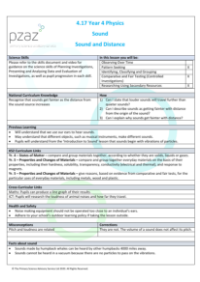Sound and Distance - Presentation

Science Resource Description
In an intriguing Physics lesson on sound and distance, students are set to explore the properties of sound in relation to how it travels and diminishes over distance. The lesson begins with thought-provoking objectives, asking whether louder sounds travel further than quieter ones, if sounds become fainter with distance, and why this fading occurs. The lesson's narrative follows Jonas and his Mum as they watch a programme about animal sounds, highlighting the remarkable distances over which animals communicate. Elephants, for instance, can detect each other's calls up to 9 kilometres away, even through their feet, while lions can project their roars over 7 kilometres. However, the true champions of long-distance communication are whales, whose low-frequency calls can span across oceans, reaching an astonishing 4000 kilometres.
Students are encouraged to ponder why these sounds can travel such vast distances and what eventually causes them to fade away. The lesson explains that the strength of the sound's vibrations determines its travel distance; stronger vibrations carry further. Yet, as sound spreads out from its source, its energy dissipates in all directions, causing the vibrations to weaken and eventually become inaudible as the energy required to maintain them is exhausted. This concept is known as dissipation. The lesson then delves into practical activities where students can investigate how far sound travels, understand that sound spreads in all directions, and observe the relationship between a sound's loudness and its distance from the source. By the end of the lesson, students are expected to articulate their understanding of why sounds get quieter as they move away from their origin and the factors that influence the distance over which a sound can be heard.






